The plant Zephyranthes belongs to the Amaryllis family. This genus unites about 35 species that can be found in nature in Central and South America, while they prefer to grow in humid areas.
Content
Features of Zephyranthes
Zephyranthes is a herbaceous bulbous perennial plant, the leaf plates of which have a belt-like shape. The flowers of this plant and the crocus are very similar to each other. The color of the flowers depends on the variety and type of zephyranthes and can be white, red or pink. And there are also varieties with two-color flowers. Different varieties bloom at different times, but in general they bloom throughout the year. At home, only 10 species of zephyranthes are cultivated, with 5 of them being the most popular with flower growers.
Brief description of cultivation
- Bloom... The flowering time depends on the species and can occur in winter, spring or summer.
- Illumination... Needs lots of bright sunlight.
- Temperature regime... In the spring-autumn period - from 20 to 26 degrees, and in the winter months - no more than 12 degrees.
- Watering... During the growing season, water abundantly immediately after the top layer of soil mixture in the pot dries out. In winter, watering should be less frequent.
- Air humidity... It grows well when the air humidity is typical for living rooms.
- Fertilizer... Throughout the entire growing season, as well as flowering, the bush is fed once every 7 days, for this, mineral fertilizer is used for flowering indoor plants.
- Dormant period... It can be observed in December – February or September – November.
- Transfer... Held every year at the very beginning of the growing season.
- Soil mixture... It should consist of sand, humus and sod soil (1: 1: 1).
- Reproduction... Daughter bulbs.
- Harmful insects... Zephyranthes is resistant to pests.
- Diseases... Bulb rot.
- Properties... In alternative medicine, this plant is used as a medicinal plant.
Home care for zephyranthes
Illumination
Zephyranthes needs plenty of bright sunlight. In this regard, when grown indoors, it is recommended to put it on a sill with a southern orientation. But the western and eastern windowsill are also suitable for growing such a flower. In the warm season, if desired, zephyranthes can be transferred to fresh air or even planted in the garden. Also in summer, a flower can decorate your balcony, but in this case, you need to choose a place for it, protected from rain and draft.
Temperature regime
In the spring-autumn period, the flower grows well and develops at an air temperature of 20 to 26 degrees. For wintering, if possible, it is recommended to move it to a cooler room (no more than 12 degrees).
Watering
During the autumn-spring period, watering is carried out systematically immediately after the top layer of the substrate in the pot dries out. For irrigation, use well-settled water (for at least 24 hours). In the winter months and the first time after transplanting, watering should be less frequent, because excessive moisture in the soil mixture can cause rot.
Fertilizer
Top dressing of home-grown zephyranthes is carried out only during the intensive growth of the bush. For this, a complex mineral fertilizer is used, which is applied to the substrate three or four times a month.
Bloom
It is noteworthy that in different species of such a plant flowering occurs at different times of the year. Once opened, the flowers wither after about 7 days. In order to create the effect of continuous flowering, it is recommended to plant several bushes at once in one container.
Zephyranthes transplant
In early spring, when the dormant period ends, a zephyranthes transplant is carried out, and this is done every year. To do this, take a wide and not very high pot, and plant several bulbs in it. A good drainage layer is made at the bottom of the container; for this, expanded clay or broken brick is used. A soil mixture suitable for transplanting should consist of sod and humus soil, and also sand (1: 1: 1). Phosphorus fertilizer is added to the finished earth mixture. When planting a bulb, keep in mind that its neck should be above the ground.
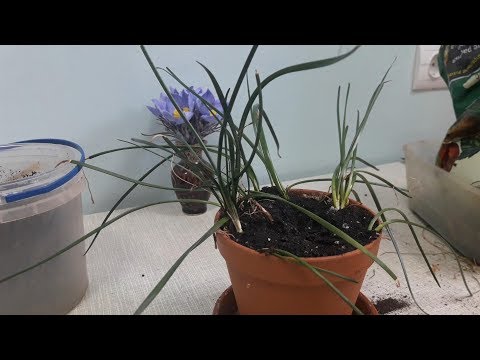

Watch this video on YouTube
Reproduction
Reproduction of indoor zephyranthes by daughter bulbs is carried out when he has a dormant period. Take a wide and low container, and plant several daughter bulbs in it. In this case, the soil mixture is used the same as during transplantation (see above). If the onion has a long neck, then it is planted in such a way that it rises above the surface of the substrate. In the event that the bulb has a short neck, then it should be completely buried in the substrate.
Diseases and pests
This flower is very resistant to pests.
The healing properties of zephyranthes
The beneficial properties of zephyranthes are known all over the world, it is used to treat colds, diabetes, cancer and tuberculosis. Zephyranthes large-flowered is used for liver diseases, and white Zephyranthes in China is used for hepatitis.
Types of zephyranthes with photos and names
Zephyranthes atamasca
In nature, the species is found in the southern United States. The ovate bulb reaches a little more than 20 mm in diameter, the surface of the neck is covered with bark. One bush grows up to 6 pieces of narrow linear leaf plates. In white flowers, lanceolate petals reach about 40 mm in length. The species blooms in the first half of spring. Recommended for growing in cool rooms.
Zephyranthes white (Zephyranthes candida)
The onion in the species is round and reaches about 30 mm in diameter, the neck length is up to 50 mm. The leaf plates appear on the bush simultaneously with the flowers and are more than 0.3 m long. The flowers are outwardly similar to crocus flowers and, as a rule, are white, their length is about 60 mm.It blooms from mid-summer to the second half of autumn.
Zephyranthes aurea
The ovate-rounded bulb reaches about 30 mm in diameter. Linear sheet plates are approximately 30 centimeters long. Funnel-shaped flowers widened to the middle are yellow. The species blooms in winter.
Zephyranthes grandiflora
In this species, the neck of the bulb is short, and it itself reaches about 30 mm in diameter. Grooved narrow sheet plates of linear shape are about 30 centimeters long and up to 1 centimeter wide. The pinkish-red flowers consist of lanceolate petals, which are about 50 mm long. The species blooms from the second half of spring to mid-summer.
Zephyranthes versicolor
The oblong bulb has a diameter of about 30 mm. The leaf plates growing after flowers reach about 30 centimeters in length. The outer surface of the white flowers has a reddish-green tint. Blooms in January.
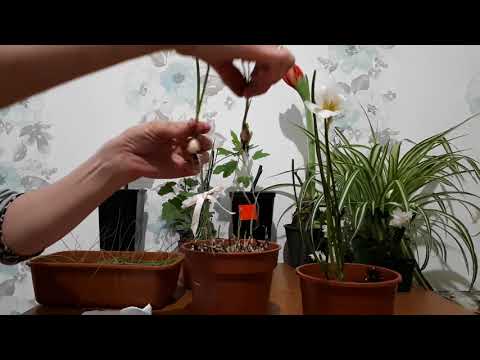

Watch this video on YouTube

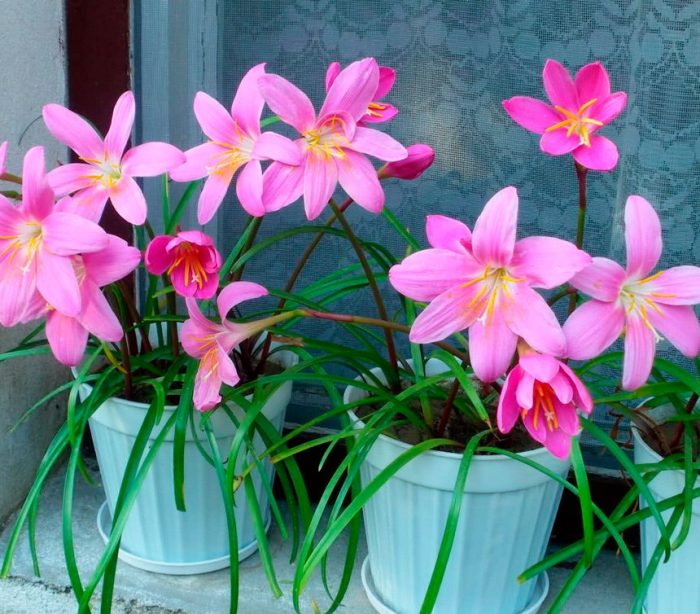
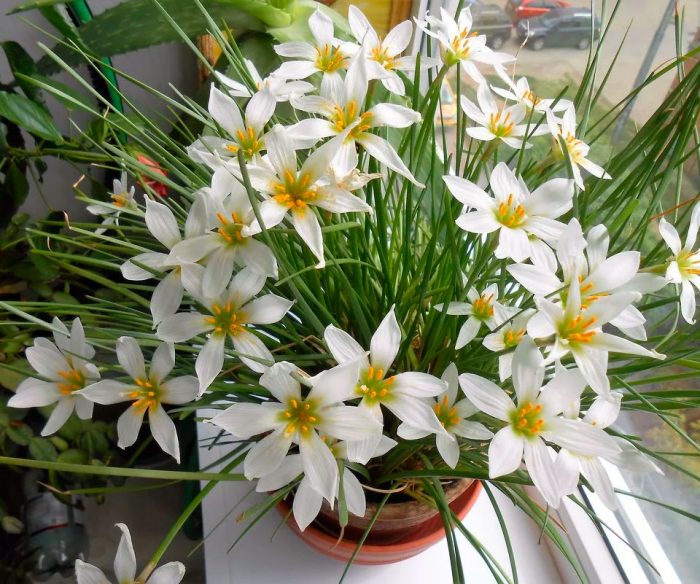
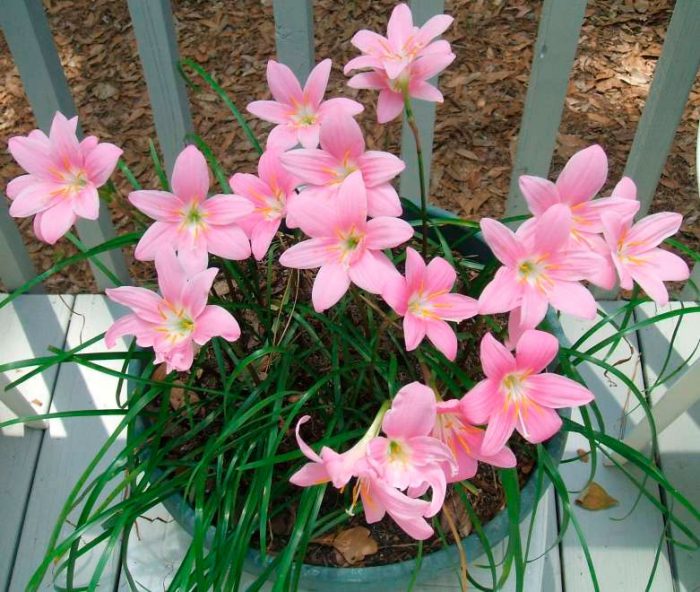
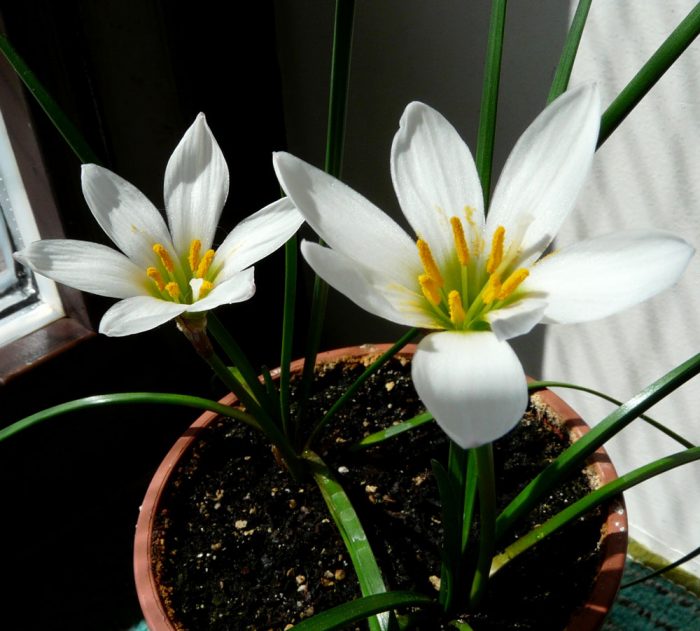
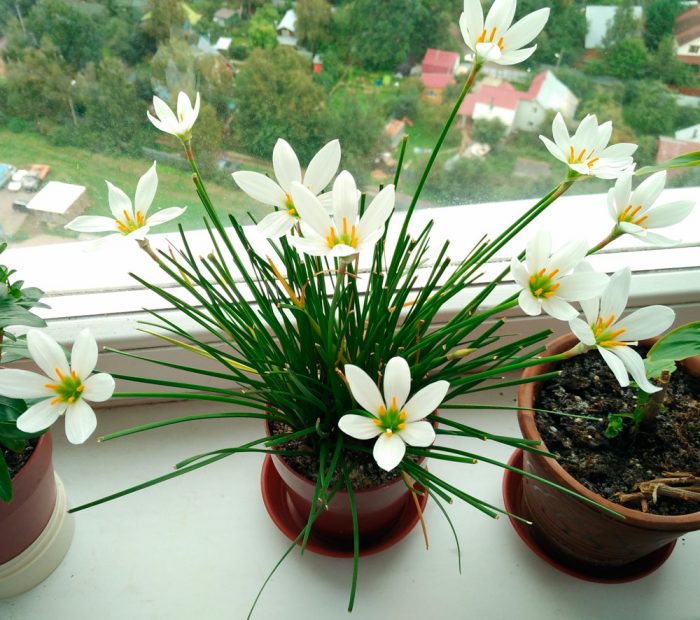
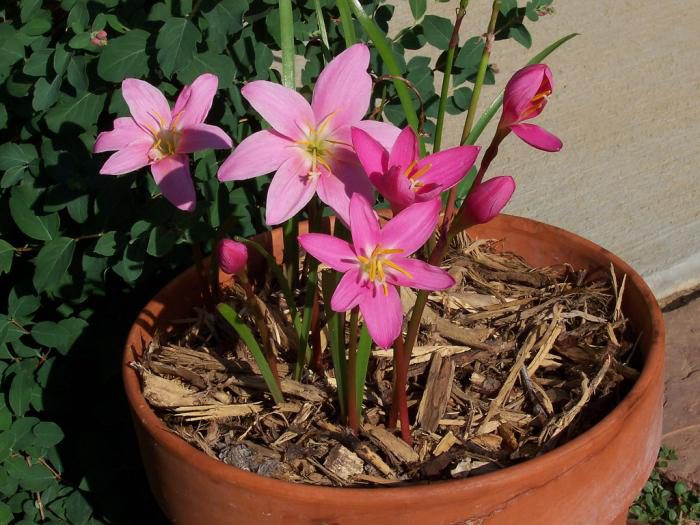
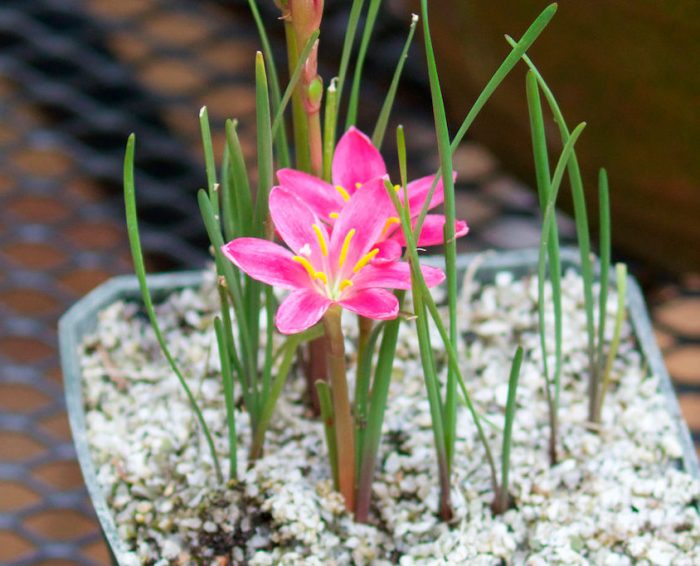
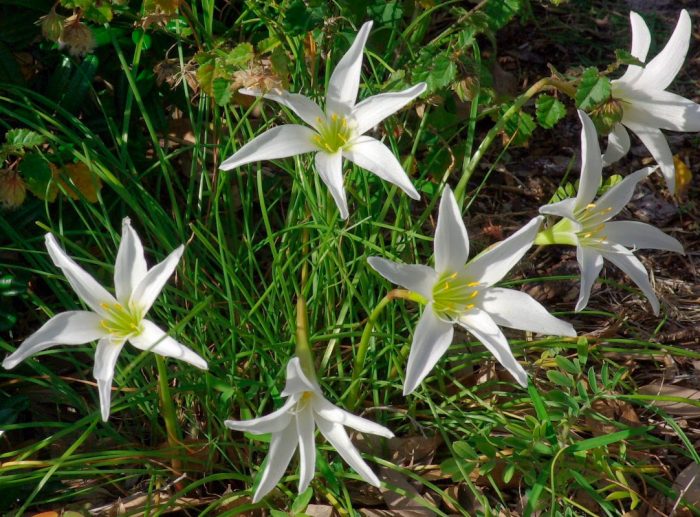
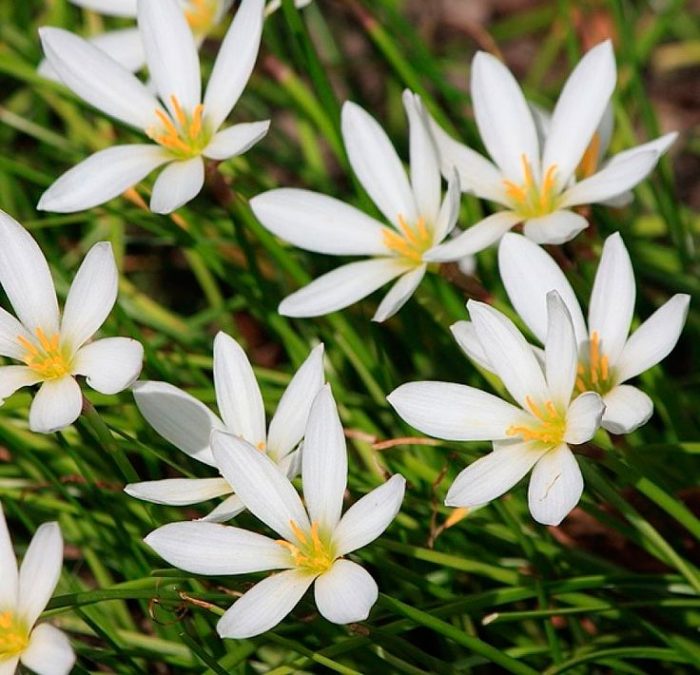
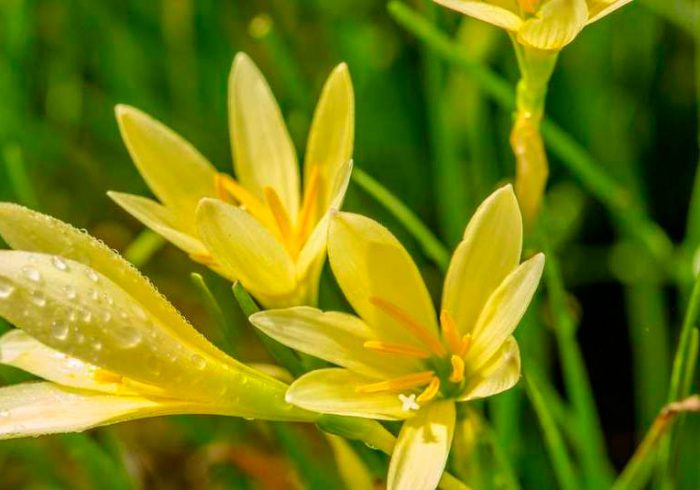
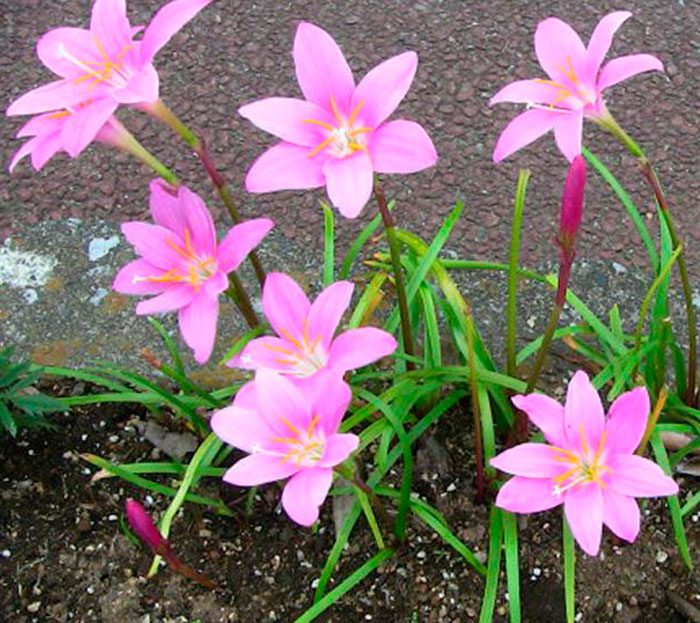
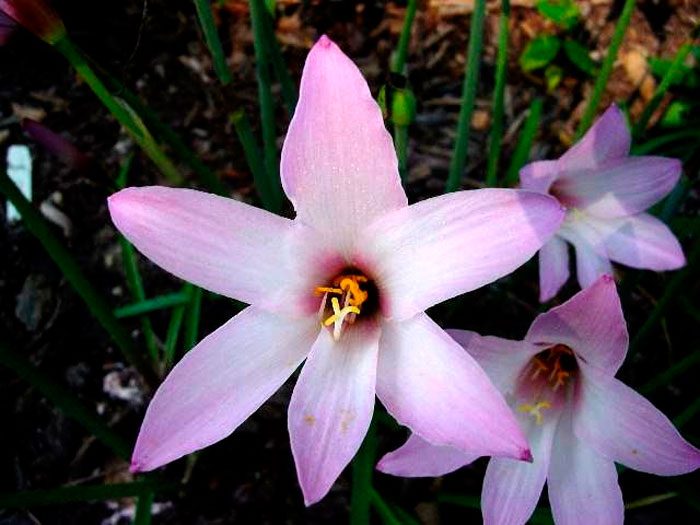





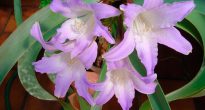




I once had such a flower with white flowers, but it did not have a dormant period for several years and grew in an ordinary pot not at all in a small one, very beautiful, but I did not transplant it and there was no such need. But one day a neighbor came in and asked flower, she was allowed to dig out a few bulbs, and after that the flower just faded before my eyes. What is the matter, tell me. I again really want to get this color. Today they should bring. Thanks for your understanding and answer. With gratitude to L.P.
Most likely, your neighbor planted your bulbs in the cemetery, as our neighbor ruined the Kos cyclamen.
L.P. And I also wanted to ask why the grass is not worth it and the leaves weigh like a rag, today they finally brought me a flower.